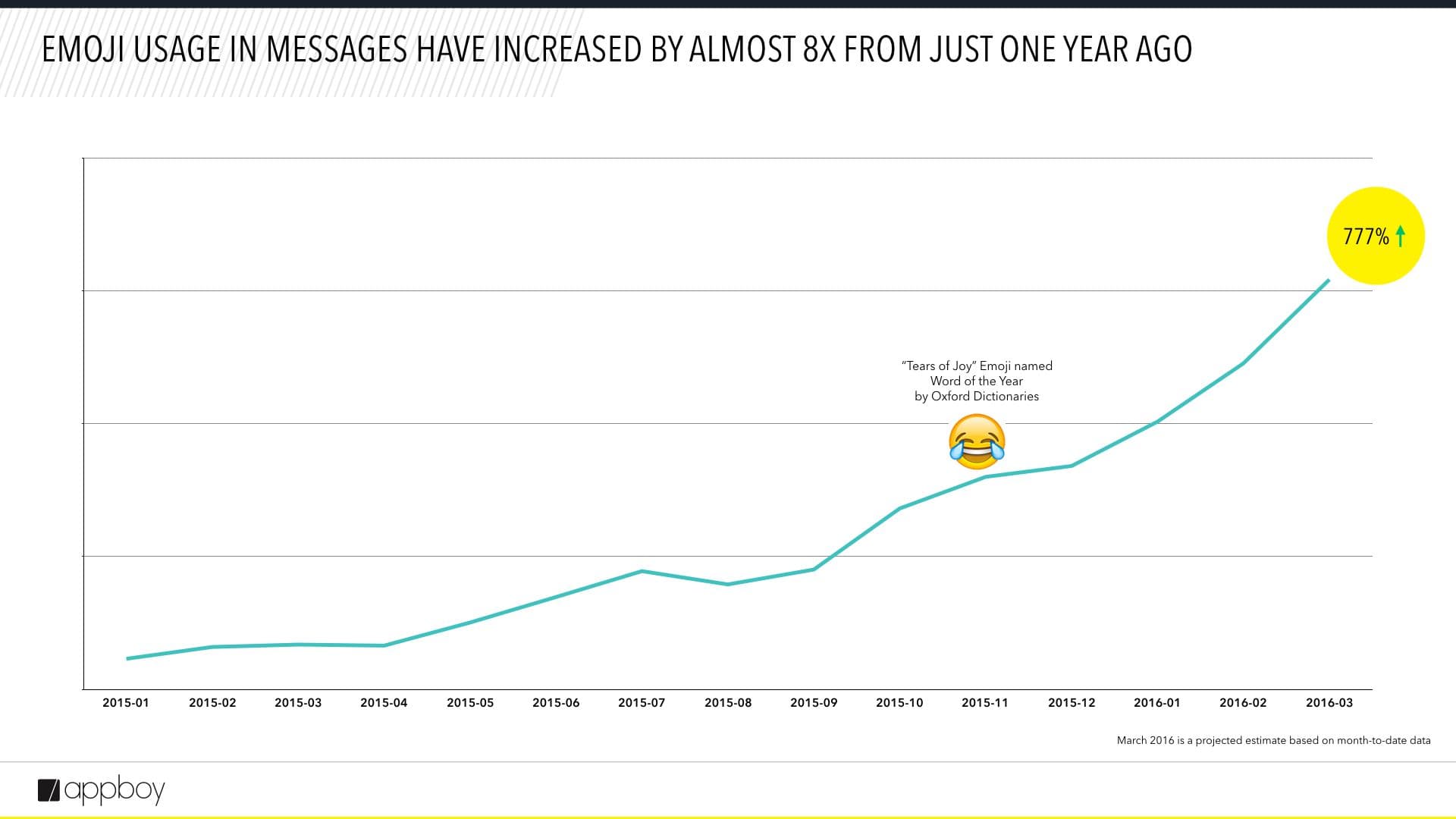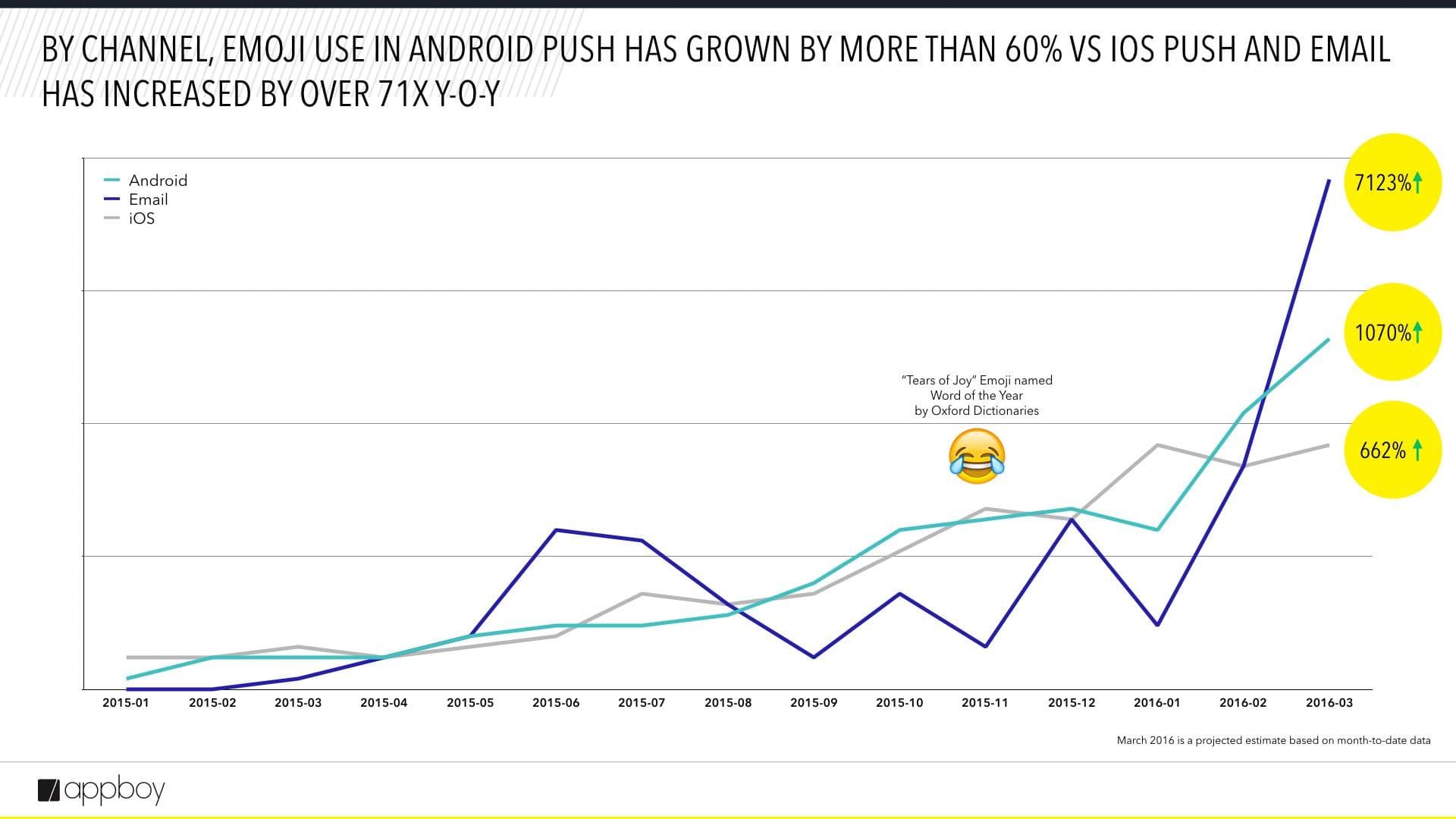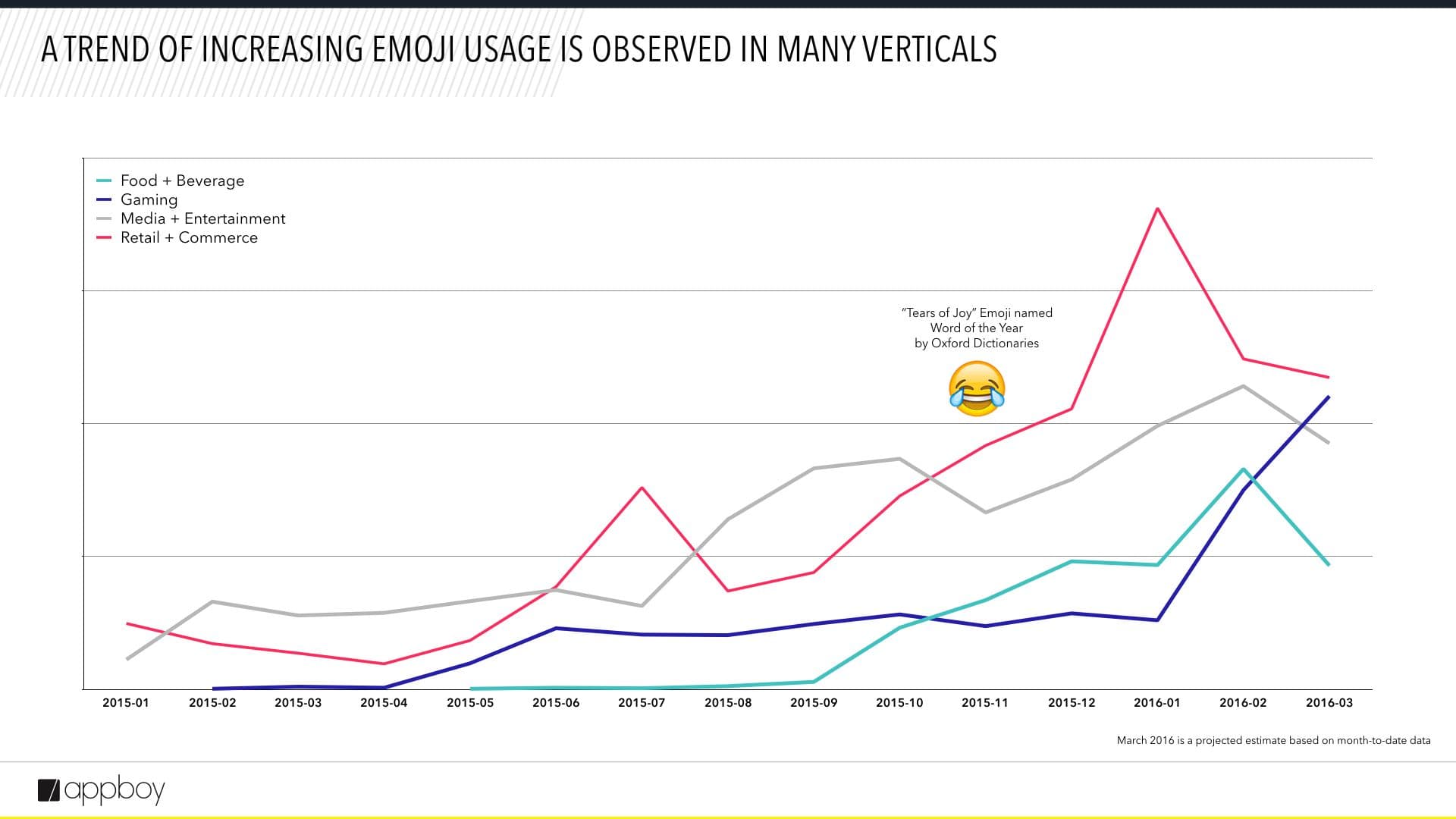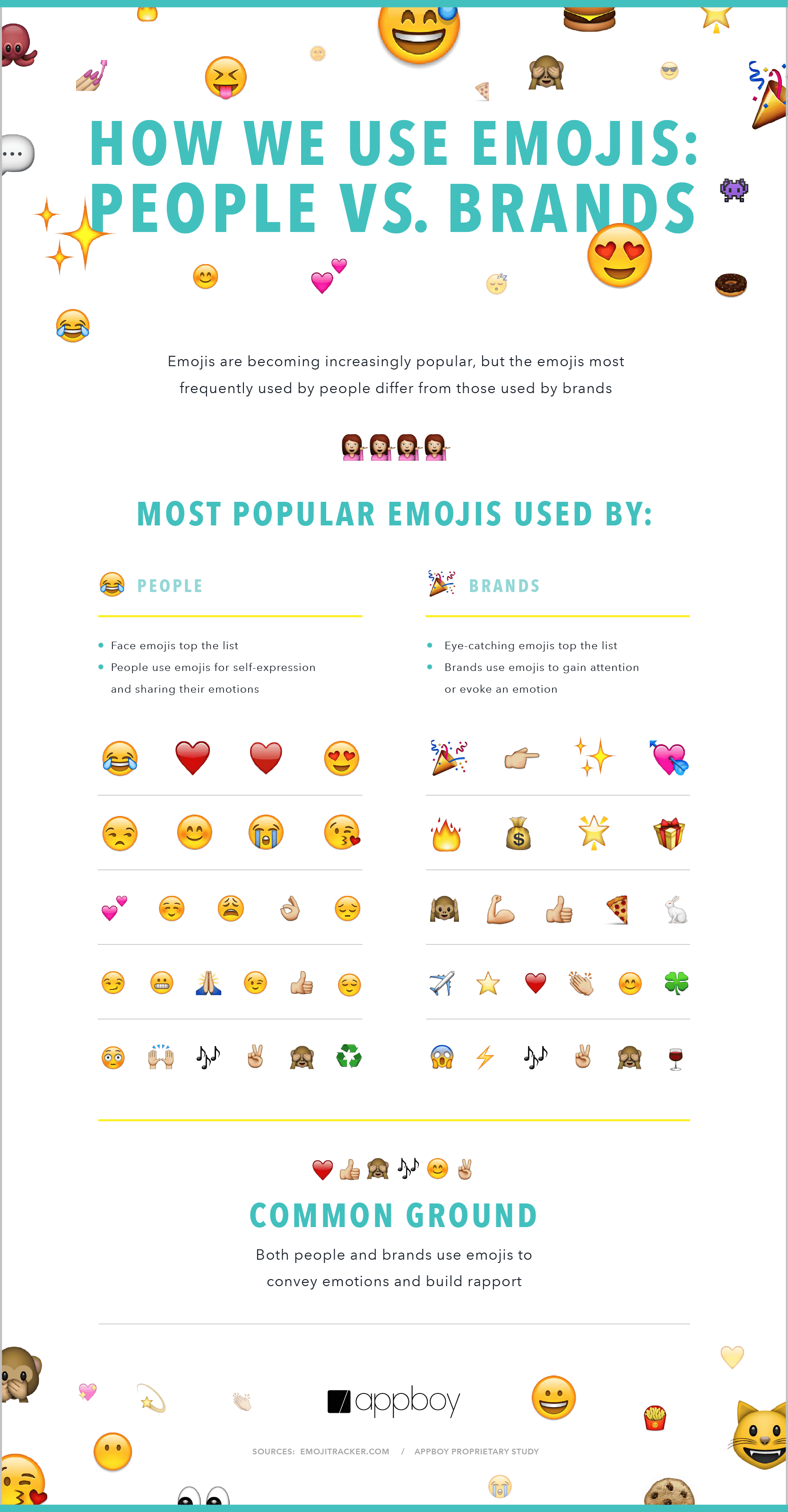Emojis Are Now Used in 777% More Campaigns Than Last Year [Infographic]
Published on March 24, 2016/Last edited on March 24, 2016/4 min read
![Emojis Are Now Used in 777% More Campaigns Than Last Year [Infographic]](/_next/image?url=https%3A%2F%2Fcdn.sanity.io%2Fimages%2Fb7pblshe%2Fmarketing-prod%2Faa632ba17e69113bb9f469db196d56c37606a91c-2500x1200.jpg&w=1200&q=75)

Team Braze
In today’s Information Age, people are exposed to brands hundreds, if not thousands, of times every day. With this level of information overload, brands are struggling to stay relevant and communicate their message in the few seconds of consumer attention they have. To put things into perspective, at an average adult reading speed of 300 words per minute, you need to communicate your message in under 40 words—or a little more than a Tweet. How do you communicate more and more powerfully with less? Well, isn’t a picture worth a thousand words?
Enter Emojis—literally picture characters. Rather than saying “this makes me happy,” which sounds a bit stilted anyway, I can use 😃. Rather than saying “I agree with you,” I can use 👍. Emoji use has skyrocketed as both individuals and brands embrace them—so much so that Oxford Dictionaries named an emoji Word of the Year after seeing over a 3x increase in use in 2015 versus the previous year.
The data speaks
At Appboy, we agree emojis are a big deal. In 2015 alone, tens of billions of messages with emojis were sent to over a billion users using Appboy technology. Year-over-year growth of campaigns using emojis has been 777%. Month-over-month growth of emoji use in 2016 has been over 20% and increasing.

Year-over-year growth of campaigns using emojis has been 777%
By channel, we’ve seen steady usage increase in push notifications with Android push growing faster than iOS push. Email was a late bloomer for emoji use but has taken off in recent months with an over 7,100% increase compared to last year.

Emoji use in emails has increased 7,100% compared to last year
By industry, retail & commerce have seen the largest growth in emoji usage, peaking during the holidays. The food & beverage and gaming industries have also been steadily increasing their emoji use.

Retail and commerce apps have seen the largest growth in emoji usage
People and brands use emojis differently
When we looked at the most frequently used emojis by brands, we were surprised to find that the “tears of joy,” Word-of-the-Year emoji wasn’t the top one used by brands in their marketing messaging; it wasn’t even in the top ten. We dove deeper and compared brand usage to individual usage and found something really interesting.

How we use emojis: people vs. brands [infographic]
Individuals using emojis in their own Tweets frequently use face emojis, including “tears of joy” to express how they’re feeling. Brands on the other hand have been using more eye-catching emojis and those that evoke emotional responses; this makes sense since brands are trying to grab attention and communicate more with less. The six emojis that overlap appear to have a common, unifying theme of conveying emotions and building rapport.
Looking ahead
What does the future hold for emojis? We believe that emojis are not going away anytime soon. They’re a powerful tool for a marketer and we recommend brands keep in mind the same messaging best practices as with other creative tactics.
Emojis shouldn’t be used just to use them; they serve a purpose. They can make messages snappier, highlighting or emphasizing importance, and communicating a tone that you can’t get with just words. Frequency of use, understanding any hidden meanings (we only recently realized the emoji we thought was a fist-bump actually means “facepunch” 👊 ), and overall emoji placement within the context of greater creative all contribute to how a user will perceive a brand’s message. Too frequent or improper use could desensitize your audience to this powerful messaging format and potentially impair your brand’s image and relevance. At this time, we haven’t observed clear trends that point toward an upside or downside but we’ll continue to monitor how brands are using emojis and how consumers are reacting to them.

Be Absolutely Engaging.™
Sign up for regular updates from Braze.
Related Content
View the Blog
How Android 16 and iOS 26 are reshaping customer engagement

Haley Trost

Proven customer retention strategies for building loyalty and reducing churn
July 02, 2025
Introducing OfferFit by Braze: Answering burning questions
